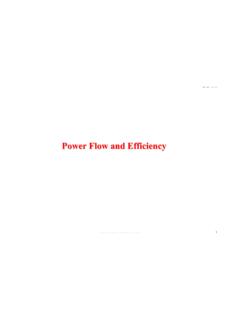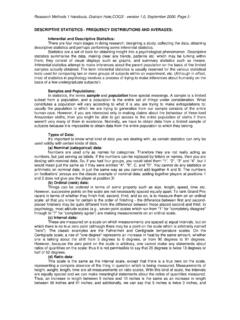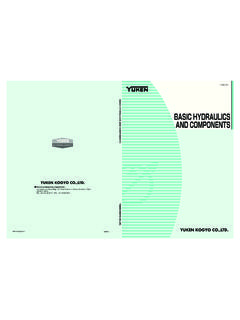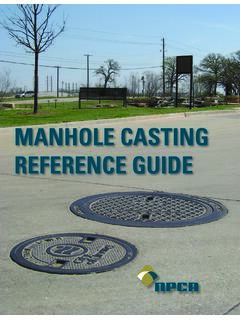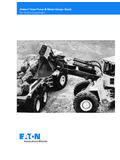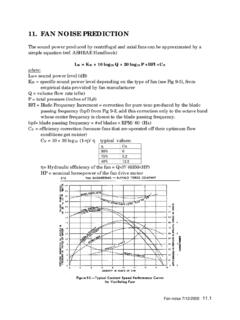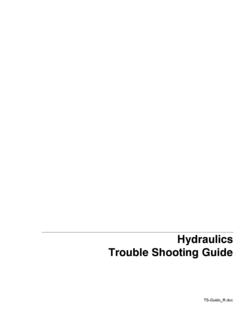Transcription of Engine Testing Overview - University of Sussex
1 Engine Testing Overview Engine Testing and Instrumentation 1. Engine Testing Topics To develop your understanding of why Engine Testing is done. To look at particular Testing requirements and methods. Test cell design and instrumentation operation How the internal combustion Engine works Engine Testing Turbo~charging, variable vane geometry applications Exhaust gas emissions, combustion analysis Performance and validation Testing Instrumentation, temperature, pressure and flow Fuel, ignition and emission loops leading to mapping and calibration. Test cell procedures and safety issues. Engine Testing and Instrumentation 2. Engine Testing acronyms' used in automotive industry DVT Design Validation Testing OCT Oil consumption test TDC Top dead centre BDC Bottom dead centre LPP Location of peak pressure BSFC Brake \Specific Fuel Consumption BMEP Brake Mean Effective Pressure MBT Minimum spark, best torque MBTL MBT retarded to clear detonation TLA Top limit advance BLA Bottom Limit advance AFR Air Fuel Ratio Engine Testing and Instrumentation 3.
2 Definition of terms Crank angle- the measure of rotation based on the Engine movement- one complete revolution = 360 degrees crank angle. Stoichiometric-a mixture(typically air and fuel) where the reacting components are present in proportions to react fully. Four stroke Engine -an Engine with a power stroke on alternate cycles-as opposed to a two stroke Engine Misfire(petrol only)-an event where the combustion event does not take place or where a flame builds and is prematurely extinguished. Lean limit- the highest air-fuel ratio at which the Engine will run with a certain level of misfire. Knock-the detonation of the 'end gas' in the cylinder under high load, or high pressure conditions. Engine Testing and Instrumentation 4.
3 Why an Engine needs a test? To find out performance before mass production and fitting it into a vehicle. To improve the design and configuration, to integrate new materials and technology Historically, the test basically was to find out the power and fuel consumption, also to test effectiveness of cooling, vibration and noise, lubrication, controllability, etc. Modern regulations force engines to reduce harmful emission and comply stringent regulations, therefore, test is getting more and more sophisticated. Engine Testing and Instrumentation 5. Power and Torque F. x d F . Force (N) Work (J) Power (W). Translational: d 2x dW dx F =m 2 W = Fx P= =F. dt dt dt Rotational: d 2 dW d . T=J 2 W = T P= =T. dt dt dt Engine Testing and Instrumentation 6.
4 Engine Torque The fundamental output of the Engine Usually expressed in Nm or BMEP. Torque is measured by a dynamometer or an in-line' device BMEP is the accepted figure used to compare the performance of engines of differing capacities. Engine Testing and Instrumentation 7. BMEP not just use HP. BMEP - Brake Mean Effective Pressure - average effective pressure of all stroke cycles. (whether they are Two or Four Cycles). BMEP swept _ volume = T 2 .. P . 2 . RPM 2 . T 2 60 P. BMEP = = 60 = ( Pa ). swept _ volume swept _ volume swept _ volume RPM. BMEP is a function of temperature of the gases in the cylinder. To increase the temperature needs to burn more fuel or to increase burning efficiency. Torque is a function of BMEP and displacement.
5 A high BMEP and a low rpm, or a low BMEP and a high rpm, can equal the same power. Larger valves, ports, pipes, compression, etc. all can increase the volumetric efficiency of the Engine . The most effective is to increase the number of cylinders. The more efficient it is, the higher the BMEP. Pressure increases by compression alone can increase pumping losses, and in the amount of heat lost to the surrounding parts. Engine Testing and Instrumentation 8. Two cycle engines: BMEP = ( HP * 6500 ) / ( L * RPM ) (psi). 2-cycles require only one half of 4-cycle BMEP to produce the same power at the same rpm. Four cycle engines: BMEP = ( HP * 13000 ) / ( L * RPM ) (psi). L = Swept volume in Liters. Examples: 1) 2-cycle, one cylinder 80cc with 20 HP at 11500rpm BMEP=20 x 6500 2) 4-cycle, one cylinder 500cc with 30 HP at 7500rpm BMEP=30 x 13000 3) 2-cycle, four cylinder 750cc with 160 HP at 8250 rpm.
6 BMEP=160x 6500 4) 4-cycle, eight cylinder 5736cc (V8) with 350 HP at 5000 rpm BMEP=350 x 13000 5) 2-cycle, two cylinder GP 250cc with 90 HP at 11750 rpm BMEP=90 x 6500 (units?). Engine Testing and Instrumentation 9. Basic Instrumentation for Engine Test Power/torque measurement - dynamometers Engine speed measurement Air flow rate measurement Fuel flow rate measurement Engine Testing and Instrumentation 10. Test Equipment and Instruments Emission equipment Thermocouples Pressure transducers (in cylinder measurement). Turbine flow meters Smoke measurement Fuel measurement Blow-by measurement (blow-by: gas past the rings into the crankcase). Air flow measurement Engine Testing and Instrumentation 11. Dynamometers Types Water dynamometer DC dynamometer AC dynamometer Eddy current dynamometer A dynamometer must be capable to allowing the Engine to develop torque at different Engine speeds Functions Resist the rotation of the Engine shaft - load control Control Engine speed Load measurement, normally Engine torque Start, motoring and stop Engine Engine Testing and Instrumentation 12.
7 Dynamometer - Torque meter or power meter Engine Testing and Instrumentation 13. Dynamometer Testing Dynamometer Testing of heat engines started long before Mr Otto made the internal combustion Engine popular. Engineers in the early 1700's with the new steam powered reciprocating engines needed a means of measuring power, in order to further develop their engines. Engine Testing and Instrumentation 14. Primitive: Rope break dynamometer Engine Testing and Instrumentation 15. Friction Brake Early systems were very primitive, a person was required to pour water on the blocks to prevent them from burning! Engine Testing and Instrumentation 16. Friction Brake The advent of accurate spring balances in the mid 1800's gave rise to a more universal and advanced dynamometer.
8 Engine Testing and Instrumentation 17. Power measurement P = T = 2 RPM Wr 60. Engine Testing and Instrumentation 18. Torque measurement torque = restraining force radius of moment arm (T) (F) (r). power = torque angular speed (P) (T) ( ). angular speed = 2 Engine speed ( ) (N rev/s). Engine Testing and Instrumentation 19. Late 19th Century steam Engine Engine Testing and Instrumentation 20. William Froude designed this dynamometer to test the engines of HMS Conquest. The unit was submerged in order to provide cooling capacity for the absorbed power. Handles located on the stern of the ship operated complex bevel gears and opened and closed the sluice gates. An arrangement of levers read the torque on a spring balance on the quay and a mechanical mechanism the speed.
9 These were coupled to a rotating drum, which produced a speed vs load chart. The area under the graph being the power. Engine Testing and Instrumentation 21. William Froude died after the HMS conquest dynamometer tests. He was undertaking sea trials off the African coast and he is buried in Cape town. His son Richard, and financial backer associate Henersley Heenan formed the company Heenan & Froude in Trafford Park Manchester in 1881. Engine Testing and Instrumentation 22. Parts of the basic hydraulic dynamometer Engine Testing and Instrumentation 23. Parts of the basic hydraulic dynamometer Engine Testing and Instrumentation 24. Froude Dynamometer Engine Testing and Instrumentation 25. Cross section of an early Froude dynamometer Engine Testing and Instrumentation 26.
10 Water Dynamometer Friction type water as friction medium between the shaft and stationary parts Passive: Can't be used to motor the Engine Slow to altering the resistance offered to the shaft rotation (several seconds). Engine Testing and Instrumentation 27. DC Dyno Comprise a DC generator. The strength of the electromagnetic field within the generator, coupling its rotating and stationary parts, can be adjusted to vary the resistance to the Engine shaft rotation. Dyno also can be used as an electric motor. The resisting torque can be adjusted rapidly and can be controlled by computer. The speed can't be changed rapidly due to high inertia parts. Engine Testing and Instrumentation 28. AC Dyno AC generator, also can be work as a motor Fast torque change, but slow speed change The AC dynamometer can , on average, operate at 25 to 30% higher speeds then DC.


